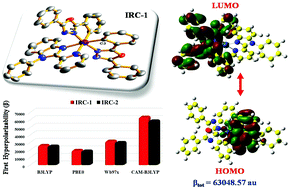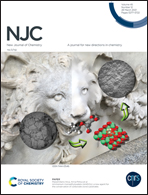Tuning the NLO response of bis-cyclometalated iridium(iii) complexes by modifying ligands: experimental and structural DFT analysis†
Abstract
Density functional theory (DFT) calculations have been carried out to investigate two synthesized iridium(III) complexes with substituted Phbd (1-phenyl-2-(pyridin-2-yl)-1H-benzo[d]imidazole) and Crbd (9-(4-(2-(pyridin-2-yl)-1H-benzo[d]imidazol-1-yl)phenyl)-9H-carbazole) as ancillary ligands. The aim of this paper is to study the effect of the substituent on the geometrical structures, electronic and second-order nonlinear optical (NLO) properties, and UV-vis absorption spectra. It is found that the first hyperpolarizabilities can be easily modulated by the introduction of Phbd and Crbd units. The complex with Phbd possesses larger first hyperpolarizability values compared to the complex with Crbd as an ancillary ligand. Significantly, the changes in the first hyperpolarizabilities can be qualitatively explained by means of the charge transfer pattern. It is anticipated that the theoretical investigation of these iridium(III) complexes will be helpful for designing high performance and versatile NLO materials.



 Please wait while we load your content...
Please wait while we load your content...